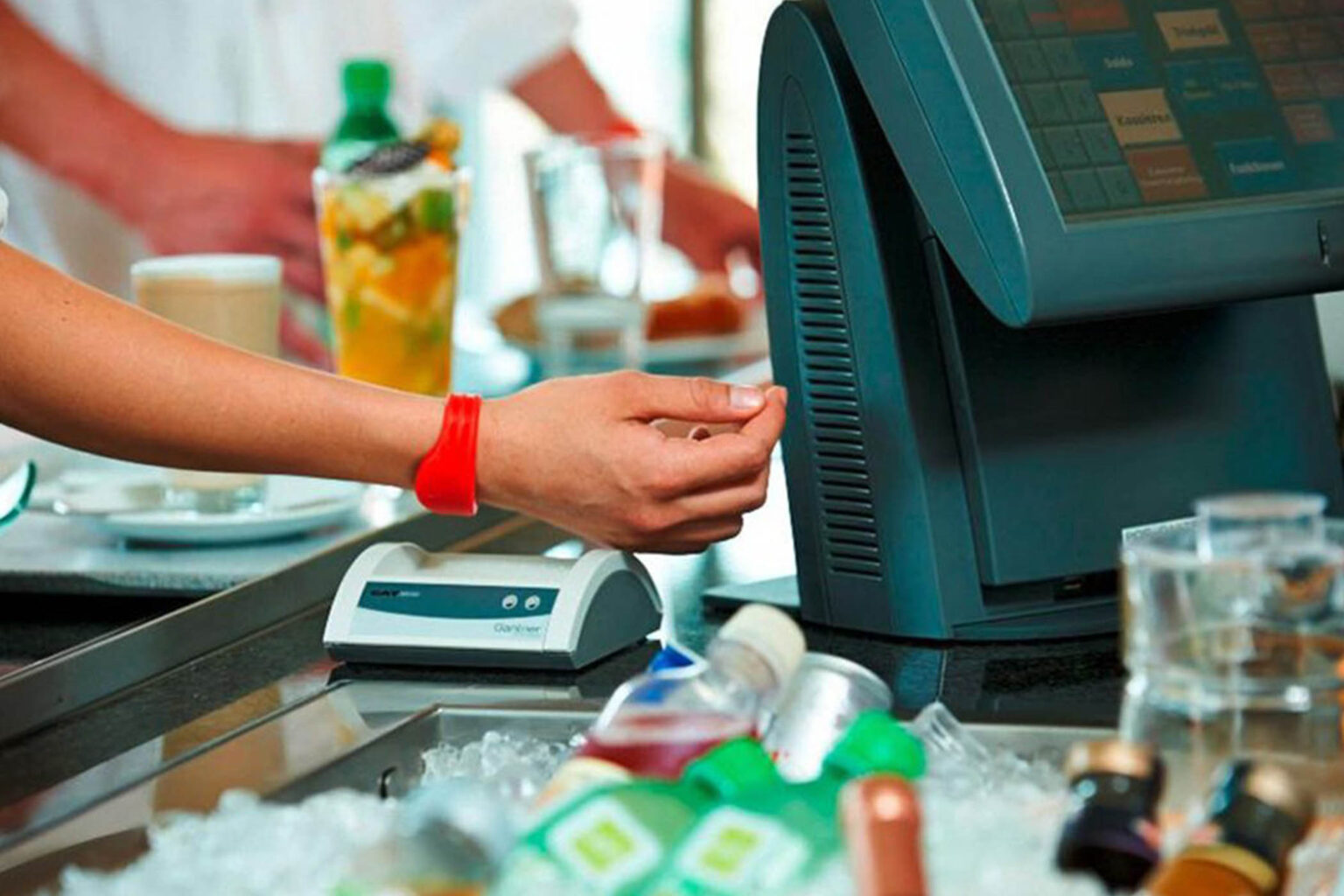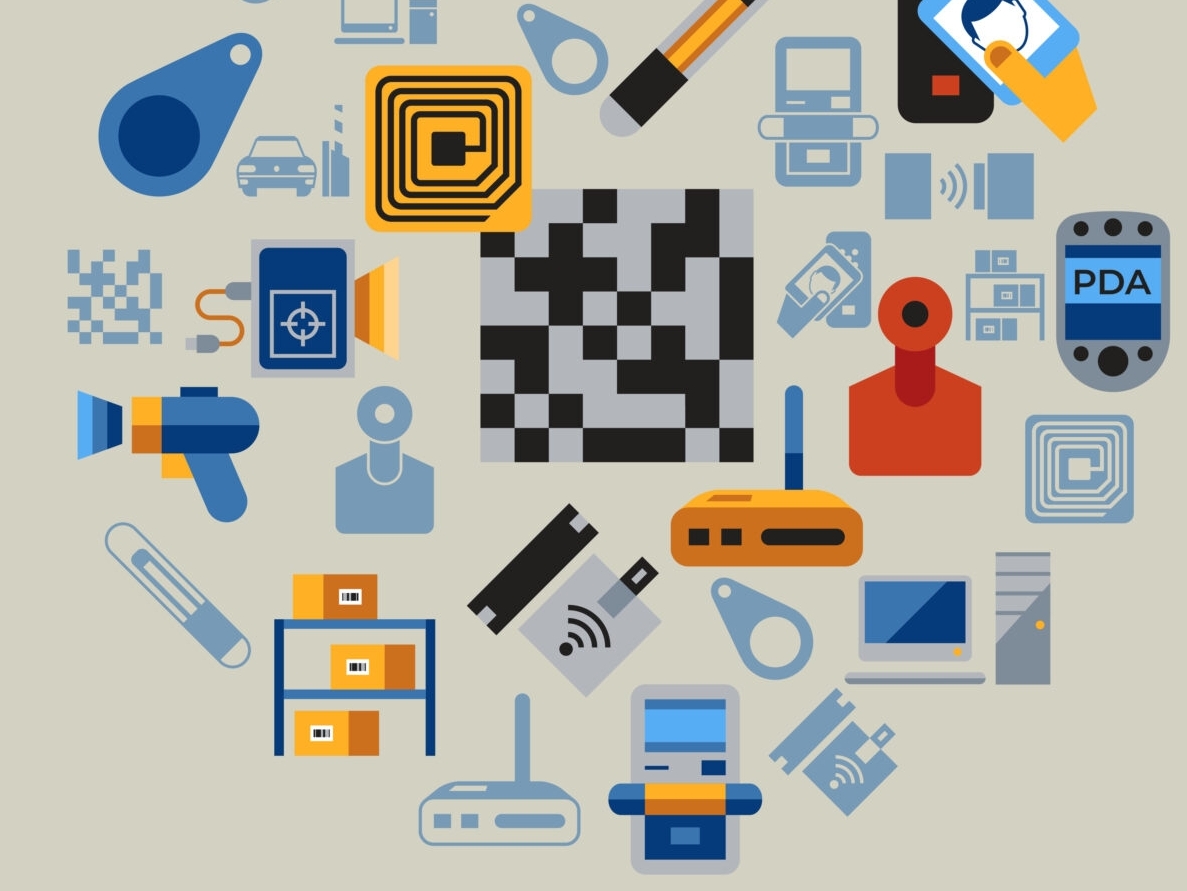In recent years, Radio Frequency Identification (RFID) technology has become a mainstream application, enabling rapid item identification. Unlike traditional barcode systems, RFID does not require close proximity for scanning; it uses radio signals for long-range identification. RFID tags can store various information, such as product manufacturers, types, and environmental variables, serving as unique identifiers without the need for barcode patterns. Additionally, RFID systems can automatically identify tags from different angles, greatly increasing recognition speed compared to barcodes.
However, despite its early advantages, the high cost of RFID has hindered its commercial adoption. As advancements in the electronics industry lead to more integrated and miniaturized devices, the cost of RFID equipment has gradually decreased, allowing it to compete with traditional barcode systems. In large commercial spaces, RFID offers unparalleled advantages for inventory management compared to standard identification technologies.
1.RFID Principles
RFID is a non-contact automatic identification technology that uses radio frequency signals to automatically identify target objects and obtain relevant data through inductive or electromagnetic coupling. The tag is a key component of RFID technology. RFID tags contain a transponder that can send specific signals to the RFID reader, and most RFID tags have an ID serial number (such as an SKU code). Once the reader receives the ID number, it can retrieve relevant data from a database and perform actions as instructed. RFID tags can also have read/write memory for storing information sent to different readers, which is used to identify the objects to which the tags are attached.
RFID tags are classified as active tags and passive tags based on whether they have a power source. Active RFID tags have their own power source (such as an onboard battery), while passive tags derive their energy from electromagnetic induction through the reader. Similarly, readers are classified into active readers and passive readers based on the type of tags they read.
1.1 Active Tags
Active tags are powered by an internal battery and feature read/write capabilities. Because they have their own power source, active tags can transmit stronger signals, allowing for greater read/write distances. However, the onboard power source makes the tags larger and more expensive, so active RFID systems are typically used for long-range identification of large aircraft and regular vehicles. Low-power active tags are usually slightly larger than a deck of cards. Active tags can remain in sleep mode when objects are outside the identification range or continuously broadcast signals.
With their power source, active tags can operate at higher frequencies, such as 455 MHz, 2.45 GHz, and 5.8 GHz, depending on the required identification range and memory needs. At these frequencies, readers can operate within a range of 20 to 100 meters.
1.2 Passive Tags
Passive tags do not have an internal battery; they obtain the energy needed for operation from the magnetic field generated by the reader. When the tag enters the reader’s identification range, it senses changes in the electromagnetic field through its antenna, generating induced current via electromagnetic induction. This current is stored in an integrated capacitor. Once the capacitor accumulates sufficient charge, the RFID tag can use this energy to send a modulated signal containing its ID information to the reader. Because passive tags lack a power source, they are much cheaper than active tags, typically costing around 20 cents each in the U.S. As microelectronics technology advances, tags can be made smaller and cheaper, allowing for wider application.
In addition to being low-cost, passive tags are very small. However, current antenna technology limits tag size; larger tags can achieve longer effective read distances. Most passive tags have around 2K of memory, which restricts them to storing ID information and some historical data, limiting their applications. With ongoing advancements in RFID technology, the storage capacity of tags will continue to increase, enabling them to hold more complex information.
Communication between passive tags and readers typically uses modulation techniques in high and low frequency. In low-frequency modulation (below 100 MHz), the tag’s capacitor and inductive coil adjust signal strength based on the ID information, radiating signals that vary with modulation frequency. In high-frequency (above 100 MHz) modulation, the tag sends signals using backscatter, causing the antenna to vary impedance due to the influence of internal circuitry. When impedance changes, the antenna radiates RF signals, which the reader can capture and demodulate. Common working frequencies for passive tags include 128 kHz, 13.56 MHz, 915 MHz, and 2.45 GHz, resulting in identification distances ranging from several centimeters to several meters. The choice of system frequency is generally determined by environmental factors, transmission medium, and identification range requirements.
2.RFID Applications
In recent years, as RFID technology has matured, its applications have become increasingly widespread, resulting in profound impacts. The most common applications include supply chain management, security, and tracking important items and individuals.
2.1 Supply Chain Management
In supply chain management, RFID tags can be used to track the flow of items throughout the entire supply chain, monitoring all logistics processes from suppliers to retailers. They also enable after-sale tracking, starting from when the customer makes a payment, with a central database recording the flow of items. Manufacturers and retailers can later query this data to effectively confirm delivery and prevent theft.
Another application of RFID in the supply chain is ensuring the legitimacy of products. The U.S. Food and Drug Administration (FDA) aims to use RFID tags to verify the legality of prescription medications. In this system, every medication in the supply chain will have a read-only RFID tag with a unique serial number. Suppliers can track the movement of these medications, and when customers make a purchase, it can be confirmed whether the medication comes from a legitimate supplier and is sold by a licensed retailer. Although the FDA acknowledges the challenges of implementing such a system in the vast and complex prescription drug supply chain, it continues to invest in this initiative to make it a reality.
RFID technology can also assist in automating supply chain management. If the goods in retail stores and related warehouses are equipped with RFID tags, retailers can use a database to know what inventory they have. When retailers retrieve goods from the warehouse system, if there is a shortage at the retrieval point, the warehouse management system can automatically pull the required items based on the RFID information.
This system has already been implemented by the global retail giant Walmart.
2.2 Security and Identity Verification
RFID can also be widely applied in security and personal identity verification. Typically, RFID tags are integrated into ID cards for access control systems. Many large companies have installed RFID readers at the entrances of their buildings, allowing for quick and automatic identification of employees as they enter. In terms of identity verification, RFID cards are increasingly likely to replace traditional magnetic stripe ID cards. Magnetic stripe cards are prone to wear and can easily lose information due to external factors, whereas RFID cards are more durable and can store more useful information.
Additionally, RFID has extensive applications in payment systems. By incorporating RFID readers into payment cards or devices, rapid identity verification can be achieved. Some payment cards directly use RFID tags to facilitate payment, such as the SmartTrip card in Washington, D.C.
RFID can also be attached to keys, making it particularly useful for automotive anti-theft systems. The reader only recognizes keys with the correct RFID tags. Even if someone uses a different key to unlock the car, the RFID system can prevent the vehicle from starting if the tag information does not match, effectively deterring theft by preventing the use of duplicate keys.
2.3 Mobile Tracking
Mobile objects can easily carry RFID tags, allowing for tracking based on the information contained in these tags. Currently, some hospitals in the U.S. have implemented RFID tags in the care of newborns. This technology effectively confirms the identity of infants, preventing misidentification or abduction. Additionally, RFID tags can monitor the movement of babies within the hospital; if a baby leaves a monitored area, the system will trigger an alarm to prevent unauthorized removal.
Hospitals can also use RFID tags to track the movement of medical equipment and instruments for better management. Libraries can utilize tags to efficiently manage large collections of books, enabling effective organization and categorization.
3.Issues and Challenges Facing RFID
3.1 Privacy Concerns
As RFID technology becomes more widespread, it has garnered increasing attention from the public. Many social activists, technologists, and privacy advocates are questioning the use of RFID. Privacy supporters argue that while companies use RFID tags to track the flow of goods, they inadvertently leak customer information. Organizations that handle sensitive data are also concerned because, when purchasing items, their identities can become linked to those products. If they pass through certain stores or centers, their identity might be disclosed through RFID tags embedded in their clothing or personal items.
RFID tags, as wireless transmission products, have an inherent drawback: they exchange information via invisible radio channels, making it difficult to determine when a tag is sending information. For retailers, having RFID tags on many products simplifies inventory management, categorization, quick checkout, and theft prevention. However, if the RFID tags remain attached after a purchase, the buyer’s identity can easily be compromised. This could lead to further risks, such as thieves using RFID readers to assess the value of tagged items, allowing them to infer the buyer’s financial situation and facilitate potential crimes.
To address these issues, EPCglobal has proposed a solution using “kill switch” technology. This allows RFID tags to be deactivated after a transaction, putting them into a dormant state so they no longer transmit signals. Similarly, RSA has developed a blocking tag that employs EPCglobal’s anti-collision protocol. This tag uses a method of obfuscation, providing all potentially readable RFID tags to the reader at once. Since a reader can only exchange data with one tag at a time, when multiple tags respond simultaneously, the reader detects a conflict. It then attempts to communicate with each tag individually, asking for each bit of information. During this process, the blocking tag sends both a 0 bit and a 1 bit in response, preventing the reader from obtaining accurate data.
In reality, many privacy issues associated with RFID tags can be resolved. Due to the limitations of current RFID technology, the identification range of tags is still quite limited, making it nearly impossible to read someone’s tag information from a distance, such as from a car or building out of sight. Moreover, weak radio frequency signals are obstructed by barriers, which can prevent the reader from recognizing tags, suggesting that RFID technology is generally safe. However, in some cases, such as through access control or payment systems, personal and related information can still be exposed. As antenna and IC technology advances, long-distance identification will eventually become a reality, making it essential to establish effective mechanisms for protecting privacy.
3.2 Security Issues
Security is another major concern for users. For example, some companies use RFID technology to manage their supply chains, but they do not want competitors to track the movement and types of their goods through the tags. Similarly, devices containing users’ financial information should also ensure that any associated data remains protected if they use RFID tags.
To address this, researchers have proposed various encryption algorithms for authenticating communication between tags and readers, allowing information to be transmitted only to authenticated readers. During the authentication process, tags need to record the ID numbers of authenticated readers, which should also broadcast their ID numbers to the tags. To prevent interception of their own ID numbers by attackers, the communication between tags and readers must be encrypted. If the authentication fails, the tag will refuse to transmit its stored information. However, this key-based authentication strategy can still be vulnerable to attacks such as man-in-the-middle and replay attacks.
3.3 RFID Integration Issue
Another challenge facing RFID technology is how to integrate it into existing systems. Many research and development departments aim to address this issue through RFID middleware, which provides interfaces to connect RFID systems with current backend systems. Middleware can resolve problems arising from the lack of standardized protocols. By using middleware, data received from frontend readers can be converted into formats that meet the requirements of backend devices, offering users significant flexibility. Many RFID middleware systems also include hook technology for connecting operational monitors, allowing users to perform real-time monitoring of the tags in use. Additionally, middleware has the capability to connect readers with databases, enhancing overall system efficiency.






